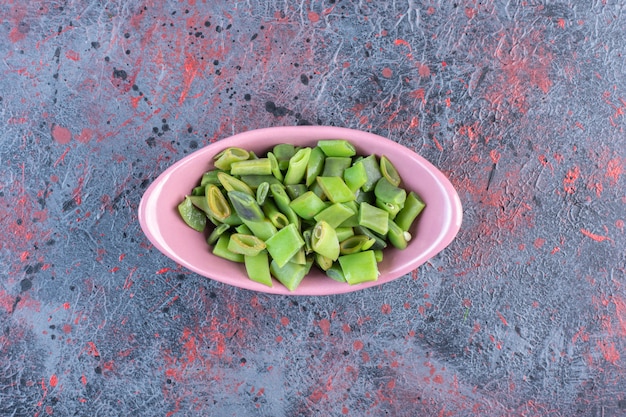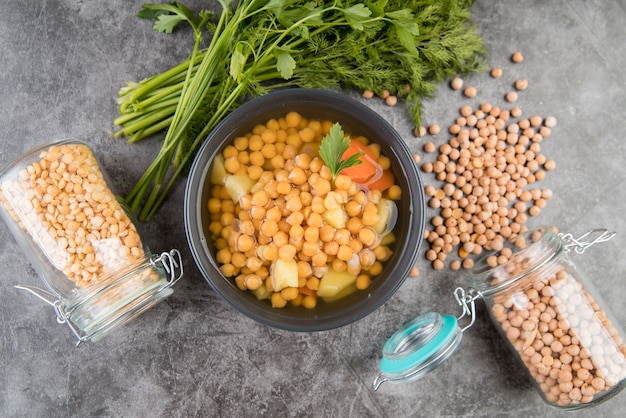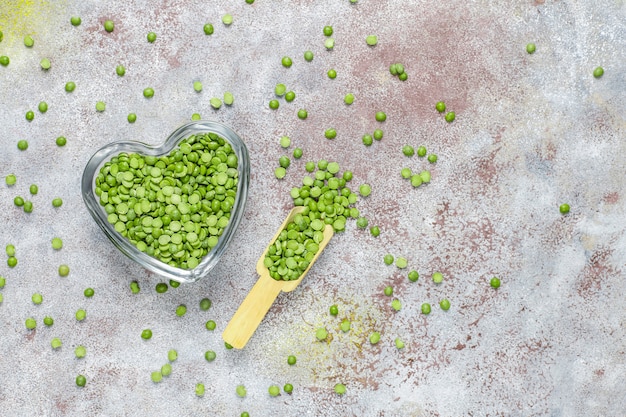green beans! They might not be the most glamorous vegetable, but don't let that fool you. These little guys are a culinary chameleon, capable of transforming from a simple side dish to a star ingredient depending on how you cook them. From crispy and vibrant to tender and buttery, there's a way to cook green beans to suit every palate and preference.
This guide is a love letter to all things green bean, a culmination of my years of experimenting in the kitchen, trying out different techniques and recipes. I've had my fair share of culinary mishaps, believe me, but I've also discovered some real gems I can't wait to share with you.
So, gather your ingredients, put on your apron, and let's embark on a culinary journey to explore the world of green bean cooking!
(Part 1) Choosing the perfect green beans

The first step on this journey is selecting the right green beans. It's all about finding those vibrant, crisp, and blemish-free beauties that promise deliciousness in every bite.
The Variety of Green Beans
There's a whole world of green beans out there, each with its own unique character and texture.
- Haricot Vert: These are the thin, slender green beans you often see in french cuisine. Their delicate texture and subtle flavour make them perfect for steaming or sautéing.
- French Beans: These are a bit thicker and more robust than Haricot Vert, offering a slightly firmer bite. They hold up well to roasting or grilling.
- String Beans: These beans have a string running along the seam, which needs to be removed before cooking. They have a slightly tougher texture and a more pronounced flavour.
Looking for the Right Beans
Here's what to look for when selecting your green beans:
- Colour: Opt for bright, vibrant green beans. Faded or yellowish beans indicate they might be older and less flavorful.
- Texture: The beans should be firm to the touch, not limp or wilted.
- Blemish-free: Avoid any beans with spots, bruises, or signs of decay.
Storing Your Green Beans
Once you've got your perfect green beans, it's important to store them correctly to keep them fresh and flavorful.
- Refrigerate: Store unwashed green beans in a plastic bag in the crisper drawer of your refrigerator.
- Avoid Overcrowding: Don't overcrowd the bag, as this can lead to spoilage.
- Use Within a Week: Green beans are best used within a week of purchase.
(Part 2) Washing and Trimming for Optimal Cooking

Now that you've got your green beans, it's time to prepare them for cooking. This simple step is crucial for ensuring your beans are clean and ready to shine.
Washing Green Beans
The easiest way to wash green beans is to place them in a colander and run cold water over them. You can give them a gentle shake to remove any excess water.
Trimming the Ends
The ends of green beans tend to be tough and fibrous. To ensure a smooth and enjoyable eating experience, trim off these ends.
- Snapping: You can snap the ends off with your fingers. Just hold the bean firmly at one end and bend it until it breaks.
- Using a Knife: Alternatively, you can use a sharp knife to trim the ends. Cut off about a half-inch from each end.
(Part 3) The Art of Blanching: Preserving Colour and Texture

Blanching is a quick cooking technique that involves plunging vegetables into boiling water, followed by an ice bath. It's a great way to preserve the vibrant green colour and crisp texture of green beans while preparing them for freezing or further cooking.
The Blanching Process
- Boiling Water: Fill a large pot with water and bring it to a rolling boil. Add a pinch of salt to the water for flavour.
- Blanching Time: Gently add your trimmed green beans to the boiling water and let them cook for 1-2 minutes. You'll know they are ready when they turn a brighter green and are slightly tender.
- Ice Bath: Immediately drain the green beans and plunge them into a bowl of ice water. This stops the cooking process and preserves their vibrant colour.
- Drying and Storing: Remove the beans from the ice bath and pat them dry with a clean kitchen towel. You can freeze them at this point for later use, or use them in a recipe.
(Part 4) Steaming to Perfection: tender-crisp green beans
Steaming is a gentle and healthy way to cook green beans. It preserves their natural flavour and vibrant green colour, creating tender-crisp beans with a satisfying bite.
The Steaming Setup
You'll need a steamer basket and a pot with a lid.
- Fill the Pot: Fill the pot with about an inch of water and bring it to a boil.
- Place the Basket: Place the steamer basket on top of the pot, ensuring it doesn't touch the water.
- Add the Beans: Add your trimmed green beans to the steamer basket, making sure they are in a single layer.
- Cover and Steam: Cover the pot with the lid and let the green beans steam for 3-5 minutes, or until they are tender-crisp. You can test their doneness by poking one with a fork. It should be tender, but still have a slight resistance.
Serving steamed green beans
Once the beans are cooked, remove them from the steamer basket and serve them immediately. You can season them with a little salt and pepper, or get creative with herbs like dill, parsley, or mint.
(Part 5) Boiling: The Classic Approach
Boiling is a classic and simple method for cooking green beans. It's a great option if you're looking for a straightforward and quick way to prepare them.
The Boiling Setup
Fill a large pot with water and bring it to a rolling boil. Add a pinch of salt to the water for flavour.
Boiling Time
Add your trimmed green beans to the boiling water and cook for 3-5 minutes, or until they are tender-crisp. Test their doneness by poking one with a fork.
Draining and Serving
Once the beans are cooked, drain them in a colander. Serve them immediately or chill them in an ice bath to stop the cooking process. You can then season them with your favourite herbs and spices.
(Part 6) Sautéing: Adding a Burst of Flavor
Sautéing green beans in a hot pan with a little fat brings out their natural sweetness and adds a delicious caramelized flavour. This method is quick, versatile, and perfect for adding a touch of culinary magic to your green beans.
Sautéing Setup
Heat a tablespoon of olive oil or butter in a large skillet or wok over medium-high heat. Add your trimmed green beans and sauté for 3-5 minutes, or until they are tender-crisp and slightly browned.
Seasoning and Serving
While the green beans are sautéing, add your favourite aromatics like garlic, onions, or shallots. Season them with salt, pepper, and any other herbs or spices you like. You can also add a splash of white wine or chicken broth to create a flavorful sauce.
(Part 7) Roasting: Creating Crispy Crunch
Roasting green beans is a fantastic way to elevate their flavour and texture, resulting in crispy, caramelized beauties that are perfect for a side dish or part of a salad.
Roasting Setup
Preheat your oven to 400 degrees F (200 degrees C). Toss your trimmed green beans with a drizzle of olive oil, salt, pepper, and any other herbs or spices you like.
roasting time
Spread the green beans in a single layer on a baking sheet. Roast for 15-20 minutes, or until they are tender-crisp and slightly browned. Give them a good toss halfway through the cooking time to ensure they cook evenly.
(Part 8) Grilling: Adding Smoky Delight
Grilling green beans adds a smoky flavour that elevates their taste to new heights. It's a simple yet impressive way to cook these little vegetables.
Grilling Setup
Heat your grill to medium-high heat. Toss your trimmed green beans with a drizzle of olive oil, salt, pepper, and any other herbs or spices you like.
Grilling Time
Place the green beans on the grill and cook for 5-7 minutes, or until they are tender-crisp and slightly charred. Give them a good flip halfway through the cooking time to ensure they cook evenly.
(Part 9) Beyond the Basics: Enhancing Flavor
Now that you've mastered the fundamental ways to cook green beans, let's explore some ways to amp up the flavour and excitement.
The Power of Herbs and Spices
The right herbs and spices can transform ordinary green beans into a culinary masterpiece.
- Dill: This herb adds a fresh, grassy flavour, perfect for complementing steamed or blanched green beans.
- Parsley: The bright, herbaceous flavour of parsley adds a touch of freshness to sautéed or roasted green beans.
- Mint: Mint offers a refreshing, cool flavour that pairs well with grilled or steamed green beans.
- Garlic: Garlic adds a pungent and savory flavour that elevates sautéed, roasted, or grilled green beans.
- Lemon: A squeeze of lemon juice brightens the flavour of green beans, adding a citrusy zing.
Creative Accompaniments
Adding accompaniments to your green beans can transform them from a simple side dish to a complex and flavourful delight.
- Toasted Almonds: Toasted almonds offer a crunchy texture and nutty flavour that complements roasted or grilled green beans.
- Bacon: The salty, smoky flavour and crispy texture of bacon add a luxurious touch to green bean dishes.
- Cherry Tomatoes: Cherry tomatoes bring a burst of sweetness and acidity, creating a delicious contrast with the green beans.
- Red Pepper Flakes: A sprinkle of red pepper flakes adds a touch of heat, perfect for those who like a little spice in their food.
(Part 10) Green bean recipes: A Symphony of Flavors
Ready to put your new green bean knowledge into practice? Here are some delicious recipes to inspire your culinary adventures.
Green bean salad with Lemon Vinaigrette
- Steam or blanch your green beans until tender-crisp.
- While they are still warm, toss them with a lemon vinaigrette (made with olive oil, lemon juice, salt, pepper, and a touch of Dijon mustard).
- Add some crumbled feta cheese, chopped walnuts, and fresh dill for a flavour explosion.
Green Bean and Bacon Stir-fry
- Sauté chopped bacon in a pan until crispy.
- Add your trimmed green beans and stir-fry for a few minutes until tender-crisp.
- Season with salt, pepper, and a sprinkle of red pepper flakes.
Roasted Green Beans with Garlic and Parmesan
- Preheat your oven to 400 degrees F (200 degrees C).
- Toss your trimmed green beans with olive oil, salt, pepper, minced garlic, and grated Parmesan cheese.
- Roast for 15-20 minutes, or until they are tender-crisp and slightly browned.
(Part 11) Green Beans Beyond the Side Dish
Green beans aren't just a delightful side dish; they can be incorporated into a variety of other dishes to add flavour, texture, and a touch of green goodness.
Soup and Stew Enhancers
Green beans can add a subtle sweetness and a bit of texture to soups and stews.
- chicken noodle soup: Green beans add a fresh element to this classic comfort food.
- Vegetable Stew: The tender-crisp texture of green beans complements the other vegetables in this hearty stew.
- Minestrone: The combination of green beans, pasta, and vegetables in minestrone creates a satisfying and flavourful dish.
Salad Star Power
Green beans add a refreshing crunch and a pop of color to salads.
- Vegetable Salads: Green beans pair well with other vegetables, herbs, and dressings.
- Grain Salads: Green beans can add texture and flavour to salads with quinoa, barley, or rice.
- Protein Salads: Green beans can complement salads with chicken, fish, or tofu.
Pasta Pairings
Green beans can be incorporated into pasta dishes, adding a vegetable element and a nice contrast in texture.
- Garlic and Lemon Pasta: The bright flavours of garlic and lemon complement the delicate taste of green beans.
- Tomato-Based Pasta: Green beans add a touch of freshness to tomato-based sauces.
- Pasta with Herbs and Spices: Green beans can be added to pasta dishes seasoned with herbs like basil, oregano, or thyme.
Meat and Poultry Accompaniments
Green beans are a classic side dish for meat and poultry. They complement a variety of flavours and can be dressed up with different herbs and spices.
- roast chicken: Roasted green beans with herbs like rosemary and thyme pair perfectly with roast chicken.
- grilled steak: Grilled green beans with a sprinkle of red pepper flakes provide a flavorful contrast to grilled steak.
- pork chops: Green beans sautéed with garlic and lemon complement the flavour of pork chops.
(Part 12) FAQs: Your Green Bean Questions Answered
Let's clear up some common questions about cooking green beans.
Q: How do I know when green beans are done?
A: Green beans should be tender-crisp when they are cooked. You can test their doneness by poking one with a fork. It should be tender, but still have a slight resistance.
Q: What happens if I overcook green beans?
A: If you overcook green beans, they will become mushy and lose their vibrant green color.
Q: Can I freeze green beans?
A: Yes, you can freeze green beans. Blanch them first, then drain and pat them dry. Place them in freezer-safe bags and freeze for up to 12 months.
Q: How long can I store cooked green beans in the refrigerator?
A: Cooked green beans can be stored in the refrigerator for up to 3-4 days.
Q: Can I use canned green beans?
A: You can use canned green beans, but they won't have the same flavour and texture as fresh green beans.
(Part 13) Final Thoughts: Green Beans are a Culinary Treasure
Green beans are a humble yet versatile vegetable that can be cooked in countless ways. Whether you prefer them crispy or tender, there's a method and recipe to suit every taste.
So, go forth and experiment! Get creative in the kitchen and discover the endless possibilities of green beans. Trust me, you'll be surprised at how much you love these little guys once you explore their culinary potential.
Enjoy the journey!
Everyone is watching

How to Cook Frozen Lobster Tails Perfectly: A Step-by-Step Guide
RecipesLobster. Just the word conjures up images of lavish meals, special occasions, and a taste of luxury. But let's...

Pigs in a Blanket Cooking Time: How Long to Bake for Perfect Results
RecipesAh, pigs in a blanket. Just the name conjures up images of those delightful little parcels of crispy pastry en...

Pork Fillet Cooking Time: How Long to Cook It Perfectly
RecipesPork fillet, or tenderloin as it's sometimes called, is a real favourite in our house. It's so versatile, and...

The Ultimate Guide to Tender, Juicy Pulled Pork
RecipesRight, let's talk pulled pork. It's one of those dishes that just screams "comfort food," doesn't it? I mean...

The Ultimate Guide to Cooking Delicious Frankfurters
RecipesLet's face it, we all love a good frankfurter. It's a classic, simple, and always satisfying. But let's be rea...
